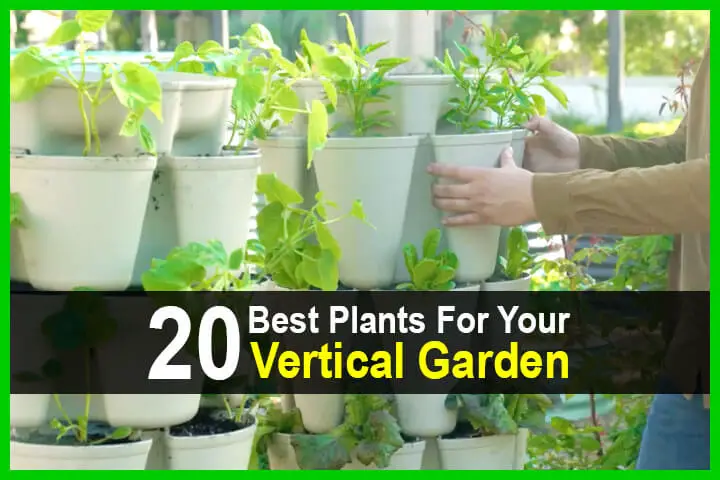Estimated reading time: 12 minutes
Food is one of the most important resources a prepper can have and every one of us strives to fill as many buckets or store as many mylar-filled bags as possible. However, almost everyone would agree that fresh food is not only better for you but it certainly tastes better than most “emergency food.” Also, stored food will eventually run out so to be as prepared as possible it’s best to have a source of food that is sustainable and renewable.
One of the best ways to do this is to grow your own garden, which provides a fantastic source of fresh food at your fingertips. Gardens take some work in setting up and maintaining but they really aren’t all that difficult to cultivate. This is especially true for people who have the outdoor space to create traditional, large gardens.
Where gardening does become more difficult is for people who live in urban environments. They usually have much less space in their backyards to dedicate to a garden and space becomes an absolute premium for apartment dwellers.
When space becomes limited, traditional gardening that is spread out isn’t a viable option. For the urban prepper with limited space, vertical gardening is one of the best options to choose from. So, let’s dig into some of the ins and outs of vertical gardening, a short list of useful tools and supplies to help you on your journey, and some of the best food plants you can use in this type of garden.
Want to save this post for later? Click Here to Pin It On Pinterest!
What Is Vertical Gardening?

Traditional gardening involves planting crops in rows and usually spaced out over a wide area of land. Vertical gardening, on the other hand, doesn’t spread the planting out along the ground but instead utilizes the space above the ground to grow.
This is done by growing vine plants or by using customized structures such as wall gardens or hydroponics systems so that individualized plants receive more resources and can therefore grow in a smaller vertical area.
To learn more about vertical gardening, check out the following video.
To learn more about vertical gardening using hydroponics check out the following video.
To learn more about setting up a vertical wall garden, check out the following video.
Vertical Gardening Pros and Cons
Pros
- Maximizes growing space
- Can grow in extremely small spaces
- Growing structures can be customized
- Can be easier to harvest crops
- Great for urban preppers
- Vertical gardens can be set up indoors or outdoors
Cons
- May not be suitable for all types of crops, such as corn or rice
- It requires a bit more work to set up and maintain
- Will require extra resources if growing indoors
Gardening Supplies
Below is a short list of supplies that will help you to set up and maintain a vertical garden
20 Plants To Grow Vertically
1. Beans

Beans are a versatile crop that goes well with many types of dishes. The best way to grow these will be to have some type of pole or supporting structure that the main stalk can be tied to.
2. Carrots

Carrots are another versatile crop but with these, you will need to vertically stack containers because carrots grow underneath the soil. Try growing just a few carrots in smaller containers in order to limit any weight issues regarding the hanging containers.
3. Garlic

Garlic is a great addition to to almost any dish and has a lot of health benefits. You will need to stack smaller containers as garlic bulbs grow underneath the soil.
4. Onion

Depending on the type of onions you are growing, you can get away with smaller containers for green onions or you may need bigger containers for larger onion varieties.
5. Tomatoes

Tomatoes will need a sturdy pot to root in but once they get going they will branch out and can be tied down to the supporting structure.
6. Lettuce

Even though lettuce isn’t a climbing crop or one that branches out, it’s worth having several containers. It’s a very fast-growing crop which means you can get several harvests of it per season.
7. Cabbage

Cabbage takes a bit longer to grow than lettuce, but it does contain more nutritional value, which might make it a better choice for some growers.
8. Pea Shoots

Many pea varieties are great for vertical gardens because they are climbers and like to spread out. Be sure to have some type of netting that the plant can weave into or use tie-downs so that its branches don’t get too out of hand.
9. Radishes

Radishes are another great addition to the garden because they are so easy to grow and have such a short growth time, meaning you can harvest them several times in a season. This is another one that will require several containers as radishes develop underneath the soil.
10. Herbs

Many herbs and spices can be planted in small continuous containers traveling upward. Herbs and spices not only have health benefits but add some much-needed flavor to any dish. Some examples of herbs you can grow in a vertical garden include cilantro, thyme, parsley, dill, basil, and rosemary, just to name a few.
11. Snow Peas

Pretty much what was said earlier about pea shoots can be said about snow peas, the only real difference is in the taste of the peas.
12. Eggplant

Eggplants can be a great addition to any garden as they have a relatively short growth time, around two months. This plant will need its own container and since eggplants can be a bit heavy, you are going to want to have a supporting structure and some tie wraps to keep them in place.
13. Peppers

Peppers, especially smaller varieties can be strung up and grown vertically. Peppers are a great crop to grow as there are many different varieties to choose from. Small to large and sweet to spicy, you are sure to find a type of pepper to suit your taste buds and garden space.
14. Cucumbers

Like eggplant, cucumbers can be a bit heavy but when properly supported they can be tied down while they will spread out vertically.
15. Grapes

Since grapes are climbing vines they do well in vertical gardens and they’re easily strung up along a trellis, netting, or other customized structures.
16. Strawberry

Strawberries will add a touch of sweetness and color to your vertical garden. This bush plant will need its own pot but the main stem will branch out and can be hung from the supporting structure.
17. Potatoes

Potatoes are a very popular vegetable to have in a garden because they are so easy to grow, you can grow a ton of them in a small space and you can grow them in a short amount of time. However, you will need quite a few heavy-duty containers to support all of the weight of the soil and potatoes.
18. Kiwi

This little sweet and emerald-colored fruit has become popular among many people but if you are starting from scratch you will have to wait several years before biting into one of these fruits. Kiwis do grow on trees so if you are adding it to your vertical garden, it may be better to position it along the edge of the garden so as not to overshadow too many crops.
19. Raspberries

Raspberries will take a good year or two to grow before you see any berries, but once the plant starts producing it will only continue to grow and spread out. This bush plant will need its own pot but the main stem will branch out and can be hung from the supporting structure.
20. Blueberries

Blueberries take even longer than raspberries to grow, upwards of five years before you start to see any berry production and a full ten years before the main plant fully matures. Blueberries are so tasty though that they are worth the work and wait! This bush plant will need its own pot but the main stem will branch out and can be hung from the supporting structure.
Conclusion
Vertical gardening is a great way to secure a sustainable food source during uncertain times. While anyone can easily set one of these gardens up, the vertical gardening method is a fantastic option for someone with limited space, especially urban preppers.
Like this post? Don’t Forget to Pin It On Pinterest!



















